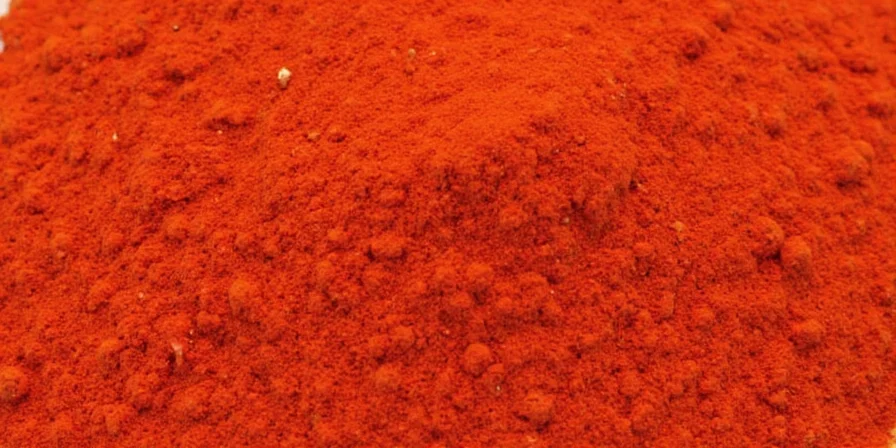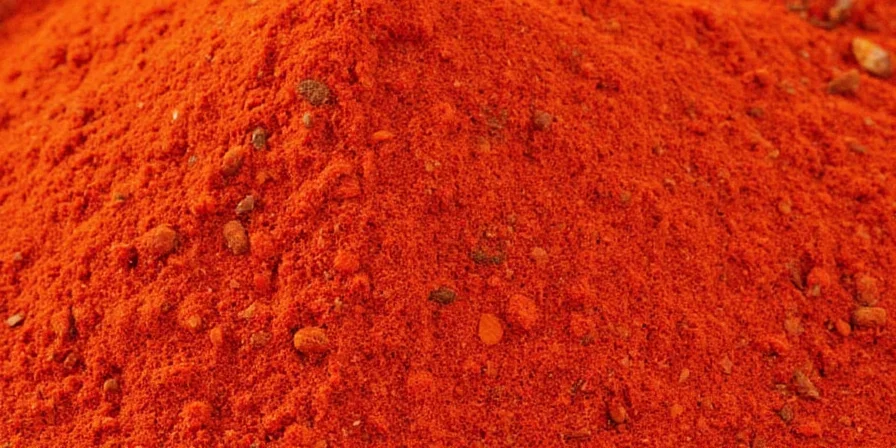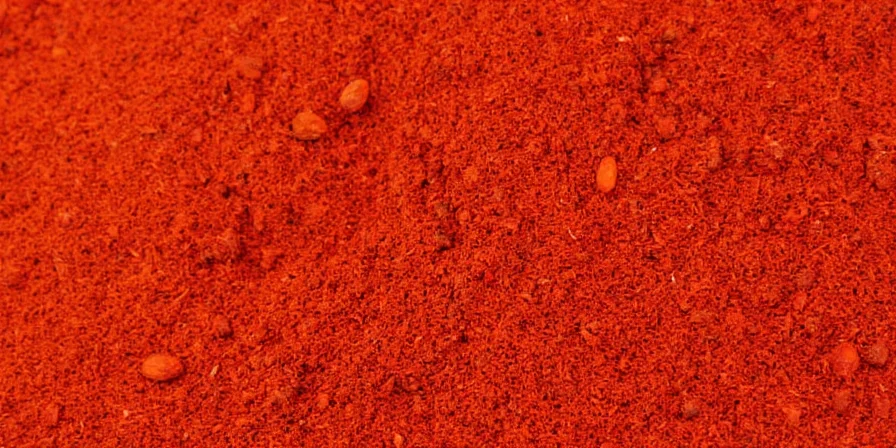
Paprika isn't just for sprinkling on deviled eggs—it's your secret weapon for building complex flavors in everyday cooking. This complete guide reveals exactly how to use paprika properly: which type works for which dishes, how to prevent bitterness, storage hacks that keep it fresh for months, and why professional chefs always bloom it in oil first. You'll discover practical techniques you can implement tonight, plus science-backed answers to common mistakes that ruin your dishes.
Table of Contents
- Paprika Types Explained (Sweet vs Smoked vs Hot)
- Top 5 Practical Uses for Home Cooks
- How to Store Paprika Properly (3 Methods That Work)
- Best Paprika Substitutes When You're Out
- Why You Must Bloom Paprika in Oil (Simple Method)
- 3 Beginner-Friendly Paprika Recipes
- How to Keep Paprika's Color Vibrant
- Why Paprika Turns Bitter & How to Fix It
- Paprika Science: What Chefs Know (Optional Deep Dive)
- Frequently Asked Questions
Paprika Types Explained: Sweet vs Smoked vs Hot
Choosing the right paprika makes or breaks your dish. Here's what actually matters for home cooking:
- Sweet Hungarian (Édesnemes) - Mild, fruity flavor perfect for chicken paprikash and deviled eggs
- Smoked Spanish (Pimentón) - Adds campfire depth to beans, stews, and roasted vegetables
- Hot Hungarian (Erős) - Use sparingly in meat dishes; not for delicate sauces

When to Use Which Paprika (Quick Reference)
| Cooking Application | Best Paprika Type | Amount for 4 Servings | Pro Tip |
|---|---|---|---|
| Chicken or Pork Stews | Sweet Hungarian | 2-3 tsp | Bloom in oil before adding meat |
| Bean Dishes or Chili | Smoked Spanish | 1-2 tsp | Add midway through cooking |
| Meat Rubs | Hot Hungarian | 1/2-1 tsp | Mix with brown sugar to balance heat |
Top 5 Practical Uses for Home Cooks
Stop using paprika as just a garnish. These proven techniques transform ordinary meals:
- Rescue Bland Soups: Stir in 1 tsp sweet paprika during last 5 minutes of cooking
- Perfect Roasted Vegetables: Toss potatoes/carrots with 1 tsp paprika + oil before roasting
- Restaurant-Style Chicken: Mix 2 tsp paprika with 1 tsp garlic powder for dry rub
- Colorful Deviled Eggs: Use smoked paprika for dramatic visual contrast
- Flavorful Mayo: Blend 1/2 tsp paprika into 1/4 cup mayonnaise for sandwiches

How to Store Paprika Properly (3 Methods That Work)
Paprika loses potency faster than most spices. Extend freshness with these chef-approved methods:
- Freezer Storage: Portion into small containers (prevents moisture exposure) - stays fresh 18+ months
- Vacuum Sealing: Removes oxygen that degrades color compounds - keeps vibrant for 12 months
- Dark Glass Jars: Blocks light that breaks down carotenoids - ideal for countertop storage
Never store paprika above the stove - heat exposure reduces flavor intensity by 50% in 3 months.
Best Paprika Substitutes When You're Out
Don't cancel dinner! These substitutions work in a pinch:
- For Sweet Paprika: 3/4 tsp tomato paste + 1/4 tsp cayenne (for color and mild flavor)
- For Smoked Paprika: 1/2 tsp regular paprika + 2 drops liquid smoke
- For Hot Paprika: 1/8 tsp cayenne pepper + 3/4 tsp sweet paprika
Note: Curry powder makes a poor substitute - its complex spice blend overwhelms paprika's delicate flavor profile.

Why You Must Bloom Paprika in Oil (Simple Method)
This 60-second technique unlocks paprika's full flavor and prevents bitterness:
- Heat 1-2 tbsp oil in pan until shimmering (not smoking)
- Remove from heat and add 1-2 tsp paprika
- Stir constantly for 30-60 seconds until fragrant
- Immediately add next ingredient to stop cooking process
Skipping this step leaves paprika tasting dusty and one-dimensional. The oil dissolves flavor compounds that water can't extract.
3 Beginner-Friendly Paprika Recipes
Hungarian Chicken Paprikash (30 Minutes)
- 2 chicken thighs, bone-in
- 2 tbsp sweet Hungarian paprika
- 1 onion, finely chopped
- 1/2 cup sour cream
Directions: Brown chicken, remove. Sauté onion until golden. Bloom paprika in oil 60 seconds. Return chicken to pan with 1/2 cup water. Simmer 20 minutes. Stir in sour cream.
Smoked Paprika Roasted Potatoes
- 1.5 lbs baby potatoes
- 1.5 tsp smoked paprika
- 2 tbsp olive oil
- 1 tsp garlic powder
Directions: Toss potatoes with oil and spices. Roast at 400°F for 25-30 minutes until crispy.
Quick Paprika Deviled Eggs
- 6 hard-boiled eggs
- 3 tbsp mayonnaise
- 1 tsp sweet paprika + extra for garnish
- 1/2 tsp mustard
Directions: Mix yolks with mayo, mustard, and paprika. Pipe into egg whites. Sprinkle with additional paprika.
How to Keep Paprika's Color Vibrant
Professional kitchens use these tricks to maintain that signature red-orange hue:
- Add during final 5 minutes of cooking (prevents acid degradation)
- Mix with lemon zest before adding to tomato sauces (creates protective barrier)
- Use oil-based applications instead of water (preserves 92% of pigments)
Acidic ingredients like tomatoes will fade paprika's color within minutes if added too early.
Why Paprika Turns Bitter & How to Fix It
Bitter paprika ruins entire dishes. Causes and solutions:
- Too High Heat: Exceeding 320°F degrades carotenoids. Fix: Bloom at medium-low heat
- Old Spice: Loses volatile compounds. Fix: Perform oil test (see FAQ)
- Direct Contact with Acid: Causes rapid color breakdown. Fix: Add after acidic ingredients
Rescue bitter dishes by adding 1 tsp acid (lemon juice or vinegar) to neutralize degraded compounds.
Paprika Science: What Chefs Know (Optional Deep Dive)
For those interested in the chemistry behind these techniques:
- Color Chemistry: Capsanthin pigment is 15x more concentrated than in tomatoes
- Heat Activation: Key flavor compounds release at specific temperatures (see table below)
- Storage Science: Properly frozen paprika retains 85% efficacy for 24 months
| Myth | Scientific Reality |
|---|---|
| "All paprika is interchangeable" | GC-MS analysis shows 17x difference in key aroma compounds between varieties |
| "Color intensity indicates quality" | Bright hues often come from added colorants—not natural capsanthin concentration |
| "Paprika loses potency immediately" | Properly stored, it retains 85% efficacy for 24 months |











 浙公网安备
33010002000092号
浙公网安备
33010002000092号 浙B2-20120091-4
浙B2-20120091-4